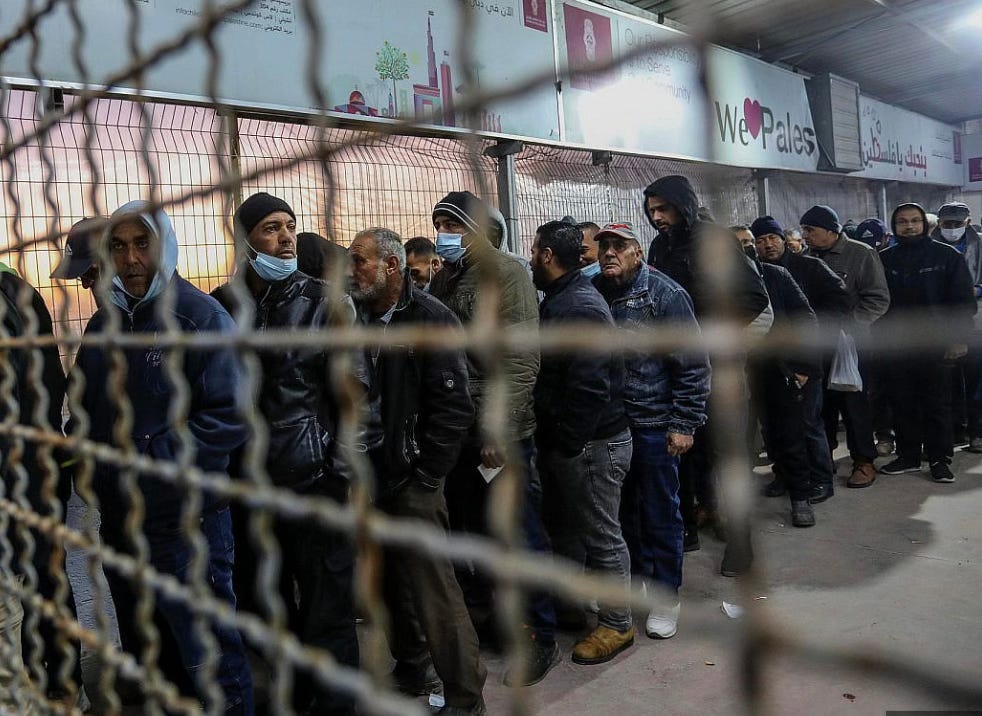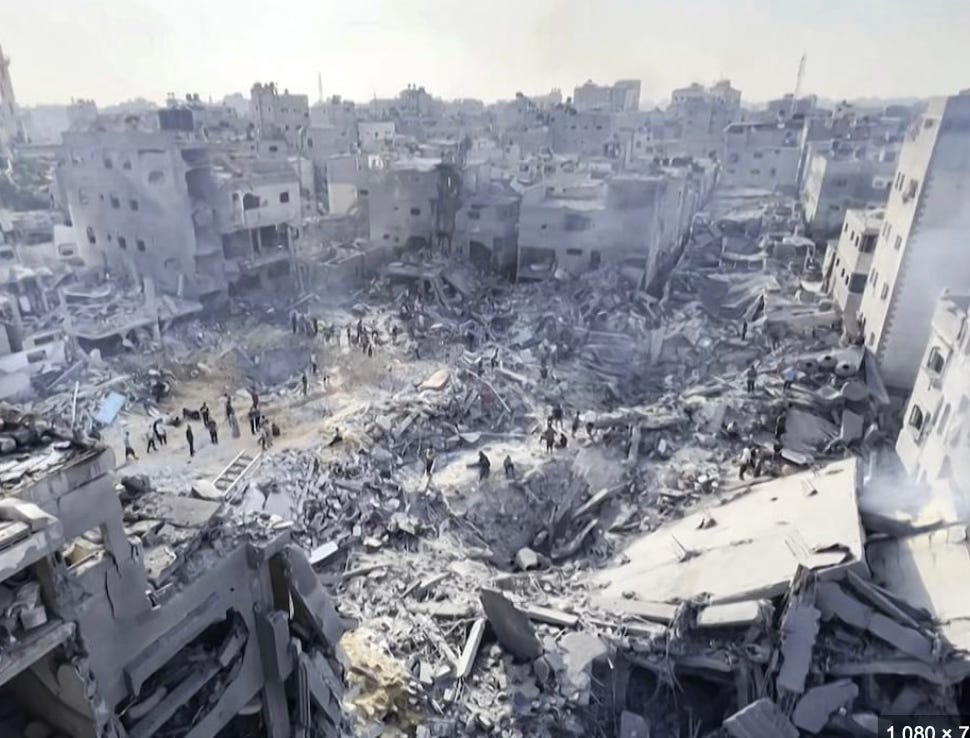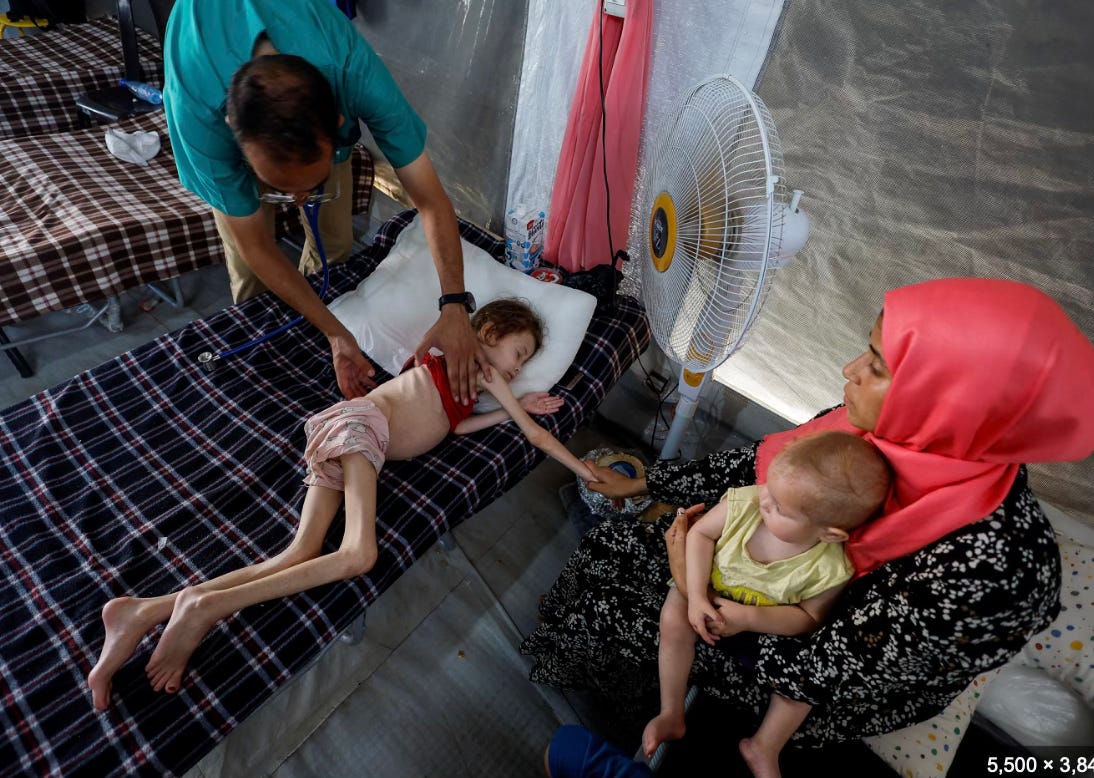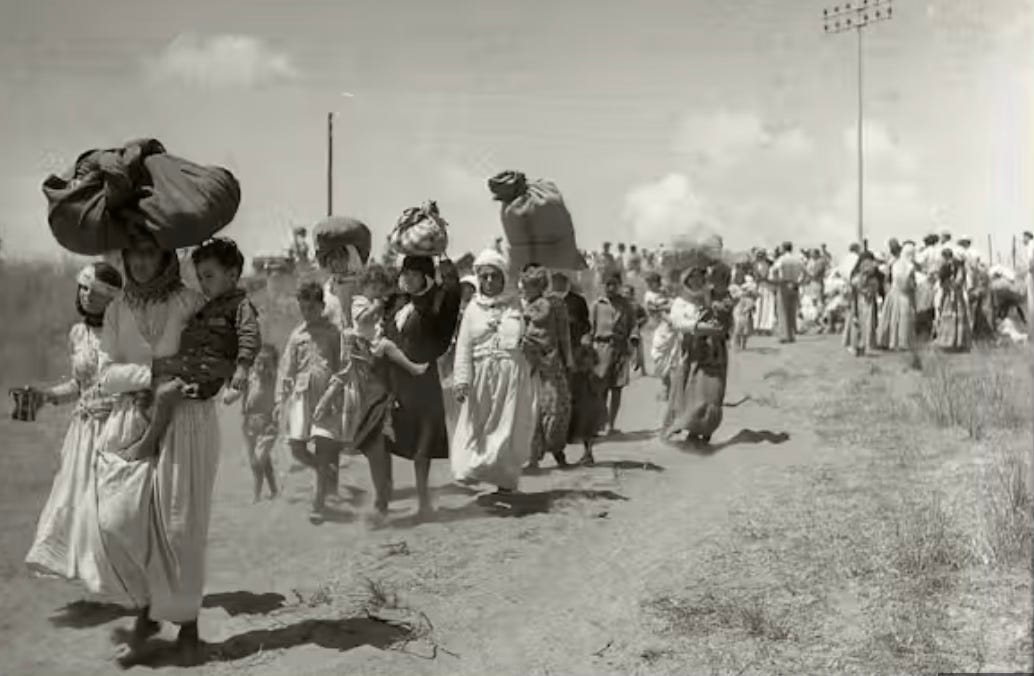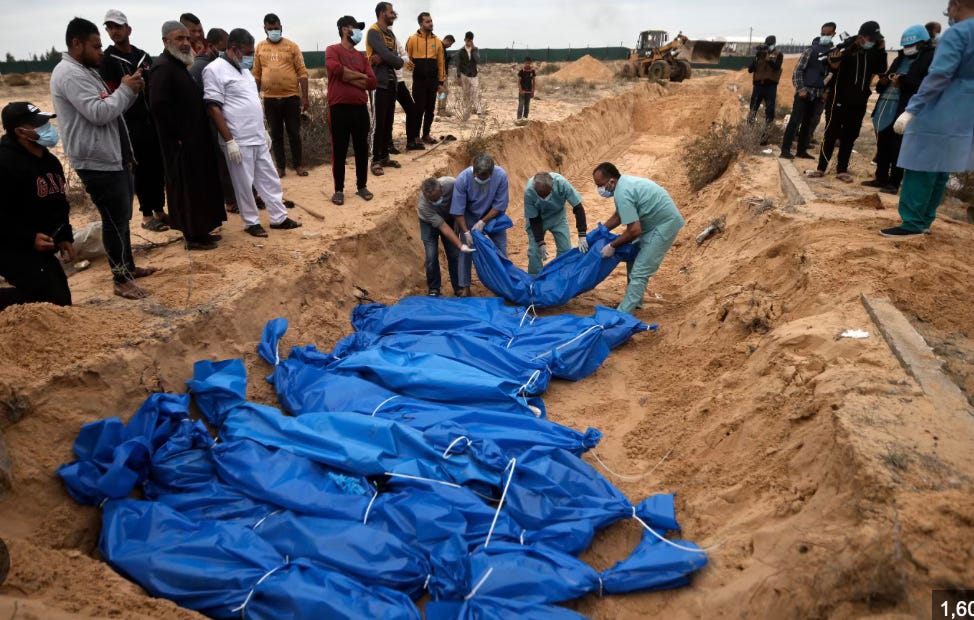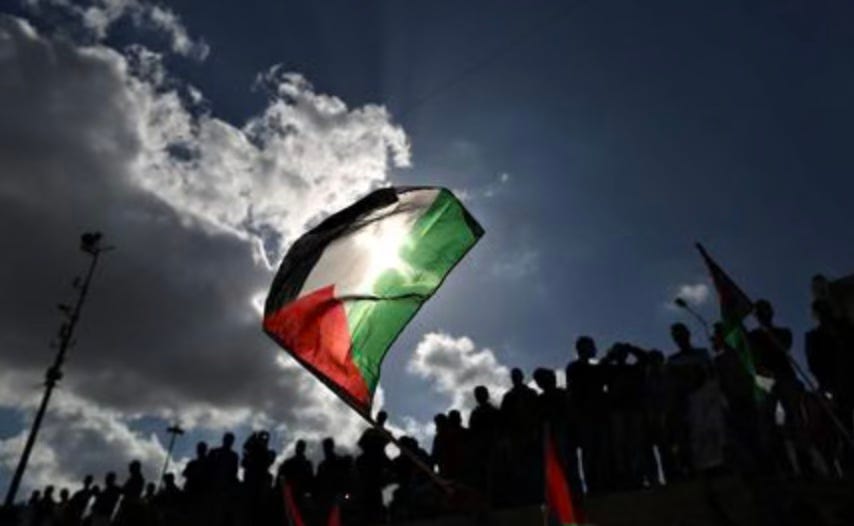Gaza: The Unfolding Nightmare – A 21st Century Concentration Camp?
The Anatomy of a Manufactured Hell
The Gaza Strip, a sliver of land barely 365 square kilometers, has become a byword for a 21st-century catastrophe, deliberately engineered and ruthlessly executed. Since October 2023, the world has witnessed an onslaught that has systematically dismantled the foundations of life for over two million Palestinians. By early 2025, the grim statistics paint a picture not of a conventional war, but of a calculated erasure.
International bodies and human rights organizations report that over 80% of Gaza's buildings lie in ruins (OHCHR, 2025a), a testament to the intensity of a bombing campaign that has made no distinction between civilian infrastructure and military targets. Hospitals, once sanctuaries of healing, operate under siege conditions, their corridors overflowing with the wounded, their surgeons performing amputations by mobile phone light as electricity and essential medical supplies have been choked off by a near-total blockade. The United Nations indicates that at least 1.9 million people - nine out of every ten Gazans - have been forcibly displaced (OHCHR, 2025b), many multiple times, herded into ever-shrinking, unliveable spaces where famine now stalks the land. Sewage floods displacement camps, breeding disease, as fuel for pumping stations has vanished.
The human cost is staggering. Thousands of children are unaccompanied, orphaned or separated from their families, a lost generation amidst the rubble. The systematic destruction of educational facilities, including every university in the Strip, has led UN experts to warn of an "educational genocide," a deliberate attempt to obliterate the future of Palestinian society (OHCHR, 2024a).
This article will dissect the historical roots of this crisis, scrutinise the flagrant violations of international law, and amplify the voices of Palestinians enduring this unliveable reality. It is an indictment of a system that has allowed such atrocities to unfold and a demand for accountability for what can only be described as a meticulously orchestrated campaign of destruction and dispossession.
From Containment to Catastrophe: The Calculated Unravelling of Gaza by Israeli Design
The charge that Israel is deliberately engineering conditions of mass forcible displacement and creating a concentration camp in Gaza is not a sudden accusation conjured from a vacuum. It is the horrifying, logical endpoint of decades of Israeli policy meticulously designed to manage, control, and ultimately diminish the Palestinian presence in the Gaza Strip. The ambition to forcibly transfer Gaza’s indigenous population is a foundational element of Israeli strategic statecraft, as laid bare by historical records and scholarly research. Dr. Omri Shafer Raviv’s (2021) damning investigation into Israeli state policies immediately following the 1967 conquest unearths the chillingly early blueprints for demographic manipulation. This historical trajectory, which commentators like Meron Rapoport (2025) have urgently flagged as reaching a terrifying crescendo, is the smoking gun. It demonstrates that the current atrocities are the premeditated culmination of a long-prosecuted war against Palestinian existence.
Shafer Raviv’s work, including the exposure of then-Prime Minister Levi Eshkol’s cold-blooded sentiment, “I would like to hope that they leave,” (Shafer Raviv, 2021) reveals the brutal mechanics of Israel’s post-1967 strategy. It was a two-pronged assault on Palestinian demography: first, to coerce Palestinians in Gaza into the West Bank, and from there, into Jordan. Second, to scour the globe, particularly South America, for nations willing to absorb the ‘problem’ of Palestinian refugees from Gaza. These were acts of demographic warfare. Israel deliberately engineered a collapse in living standards within the enclave, a calculated immiseration designed to break the Palestinian will to remain (Shafer Raviv, 2021). While tens of thousands were indeed driven out towards Jordan, the vast majority clung to their land, their resilience tragically fuelling the very unrest and nascent armed resistance that Israel sought to crush. The Battle of Karameh in March 1968, a pivotal early clash between Israeli forces and the Palestine Liberation Organization (PLO), was fought in part by those Palestinians Israel had forcibly displaced from Gaza to Jordan. This inconvenient blowback, as analysed by historians and contemporary critics (Rapoport, 2025), reportedly forced a temporary recalibration in Israel’s overt enthusiasm for mass expulsion at that specific time.
This led to a cynical strategic pivot by early 1969. Recognising that outright brutality was breeding resistance and unwanted regional instability, Israel shifted its tactics to a more insidious policy of containment and economic strangulation. This was disguised as management. Gazans were temporarily permitted to work in Israel, a move designed to ease Israeli economic pressures and, crucially, to dampen the immediate impetus for mass emigration (Rapoport, 2025; Shafer Raviv, 2021). Simultaneously, Jordan, under its own pressures, began to seal its borders.
This further trapped the Palestinian population within Gaza’s confines and evolved into a long-term Israeli doctrine: the creation of a hermetically sealed, controllable Palestinian ghetto.
The Israeli security apparatus, as detailed by scholars like Dr. Dotan Halevy (2021) in his deconstruction of the ‘making’ of the Gaza Strip, concluded that it was far more advantageous to imprison Palestinians within Gaza, where they could be perpetually monitored, managed, and, when deemed necessary, collectively punished. Thus, even before the imposition of the barbaric 17-year blockade, the act of leaving Gaza was transformed into an “extremely difficult and costly process,” (Rapoport, 2025) a privilege reserved for the exceptionally wealthy or those with powerful external connections, effectively condemning the vast majority to a slow-motion dispossession (Amnesty International, 2025). The current catastrophe is not a deviation from this path. It is its brutal, inevitable conclusion.
International Law on Trial: Gaza – A Slaughterhouse of Justice, A Testament to Impunity
The unfolding, premeditated catastrophe in Gaza is a relentless carnival of bombardment. It is mass ethnic displacement, the systematic annihilation of civilian life. It drags the corpse of international law through blood-soaked streets. The unadulterated scale of destruction, and meticulously documented barbarity, demands immediate and unyielding international retribution. The pronouncements of the UN High Commissioner for Human Rights that “Gaza is already the world’s largest open-air prison and is fast becoming a graveyard,” (OHCHR, 2025) are chillingly accurate field notes from a slaughterhouse deliberately engineered by Israeli state policy. Esteemed bodies like Amnesty International have been forced to compile a “staggering catalogue of war crimes,” (Amnesty International, 2025) a litany of horrors including direct and indiscriminate extermination campaigns against civilians and civilian objects, and the medieval, barbaric deployment of starvation as a weapon of mass subjugation. Human Rights Watch (2024a; 2024b) has relentlessly documented the unlawful Israeli onslaughts, the criminal use of white phosphorus raining down on densely populated civilian enclaves, and the deliberate severing of essential life-sustaining services.
The crime of forcible displacement - a foundational prohibition enshrined in the Fourth Geneva Convention and the Rome Statute of the International Criminal Court (ICC) - is the brutal, ongoing, undeniable reality for millions of Palestinians in Gaza. The mass ‘evacuation’ orders barked by the Israeli military, herding over a million souls into ever-shrinking, unliveable pens, are instruments of ethnic cleansing. When these decrees are enforced by the intensive, merciless bombardment of the very areas from which civilians have been commanded to flee, they constitute a criminal pattern of unlawful displacement. A war crime of monumental proportions (OHCHR, 2025a; Amnesty International, 2025). The cynical, Orwellian creation of so-called ‘humanitarian zones’ or ‘safe zones’ offers no fig leaf for these atrocities. Such zones have been predictably proven to be death traps: unsafe, undersupplied, and deliberately transformed into sites of indefinite confinement and rampant disease. They only amplify the depth of Israeli criminality and the world’s complicit failure (Amnesty International, 2025).
Collective punishment is another contemptuous spit on the Geneva Conventions. The comprehensive, suffocating siege imposed on Gaza is a brutal, medieval blockade severing access to the very elements of life: food, water, electricity, fuel, and medicine. This is a direct assault on a captive civilian population, universally condemned as such by the highest international authorities. These condemnations, however, have proven as toothless as they are predictable (OHCHR, 2025a; Amnesty International, 2025; Middle East Monitor, 2025). The UN Special Rapporteur on the situation of human rights in the Palestinian territory occupied since 1967, Francesca Albanese, has courageously and unequivocally labelled such actions for what they are: “a war crime and a crime against humanity” (Albanese, 2024.) The question is not whether crimes are being committed, but why the criminals continue to act with total impunity.
International humanitarian law is not a polite suggestion; it is a binding, absolute obligation demanding that all parties to a conflict distinguish, at all times and without exception, between civilian objects and legitimate military objectives. Attacks must be strictly proportionate, meaning any anticipated civilian harm must not be excessive in relation to any direct military advantage. The harrowing reports from Al Jazeera and a legion of human rights organisations paint a landscape of utter ruin. Civilian life has been systematically pulverised, often without a shred of credible military justification being offered or even feigned.
In addition, the use of starvation as a method of warfare is a premeditated, cold-blooded, and criminal tactic of extermination, as is the deliberate, systematic obstruction of life-saving humanitarian aid. The vindictive razing of agricultural land and food production capabilities; the strangulation of all essential supplies.
These are not errors in judgment.
Rather, they are calculated acts designed to inflict maximum suffering; to break the Palestinian people. They unequivocally constitute a heinous war crime (Amnesty International, 2025; Human Rights Watch, 2024b). The catastrophic, man-made humanitarian crisis gripping Gaza, defined by widespread, acute, and fatal hunger, is the direct, foreseeable, and intended consequence of these criminal Israeli policies.
The torrent of inflammatory, dehumanising rhetoric, when viewed alongside the staggering scale of Palestinian deaths and the systematic, scorched-earth destruction of Gaza, has irrevocably moved the discourse beyond war crimes to the gravest, most unpardonable crime of all: genocide.
Francesca Albanese (2024), in her report ‘Anatomy of a Genocide,’ concluded with chilling clarity that there are reasonable grounds to believe the threshold indicating Israel’s commission of acts of genocide against the Palestinian people in Gaza has been met and surpassed. Her evidence is irrefutable, citing not only the unambiguous statements of genocidal intent from Israeli leaders, but also the mass killing of Palestinians. The infliction of serious, life-altering bodily and mental harm, and the deliberate, systematic imposition of conditions of life calculated to bring about the physical destruction of the Palestinian people in Gaza, in whole or in substantial part.
The Middle East Monitor has also relentlessly documented the mountain of statements and actions that build this unassailable case, including the appalling, sub-human references to Palestinians as “human animals” by an Israeli Defence Minister (Middle East Monitor, 2025.) The explicit, triumphalist calls from within the Israeli political and societal establishment for the re-establishment of Jewish settlements on the smoking ruins of Palestinian lives and communities. The legal bar for proving genocidal intent in a court of law is notoriously (and some would say deliberately) high. But, the overwhelming weight of evidence detailing widespread, systematic attacks on civilian life and infrastructure - coupled with the openly eliminationist rhetoric of Israeli leaders - has made the charge of genocide not just a possibility, but a horrifying, undeniable reality (Sulaiman, 2023.)
Echoes of Nakba, Screams of Today: The Crushing, Deliberate Erasure of Palestinian Existence
For the Palestinian people, the genocidal onslaught currently engulfing Gaza is the Nakba unleashed anew. A reliving of their most profound and foundational collective trauma - the ‘Catastrophe’ of 1948, which saw the brutal ethnic cleansing of the majority of the Palestinian people from their ancestral lands.
This historical lens is the only one through which the depth of Palestinian anguish, the fury of their resistance, and the criminal intent of their oppressors can be truly understood. The current horrors are not isolated. They are the calculated continuation and acceleration of a systematic, decades-long Israeli campaign to erase the Palestinian people and their very presence from their homeland (Sulaiman, 2023; Middle East Monitor, 2025).
The intergenerational trauma of the Nakba remains a bleeding, open wound at the heart of Palestinian identity and political consciousness. Families, hounded from their homes and lands, have passed down not just stories but the very taste of stolen olives, the scent of lost orange groves, the unbearable weight of keys to doors that no longer stand. This has instilled an unquenchable thirst for justice and an unbreakable resolve to return.
The current genocidal displacement, with over 1.9 million Gazans ethnically cleansed from their homes, many hunted and bombed multiple times (OHCHR, 2025a; Amnesty International, 2025), is a direct, horrifying reenactment of these inherited nightmares. The sight of families fleeing with nothing but the clothes on their backs and the terror in their eyes, of children orphaned, maimed, and bewildered by a world that offers them only death, and of elderly survivors forced to relive the abject horrors of their youth, is a devastating, deliberate echo of 1948. This is an existential assault, a calculated attempt at the final annihilation of Palestinian identity and their sacred connection to the land of Palestine.
The systematic destruction of cultural heritage, the bombing of universities and schools, the desecration of mosques and churches in Gaza further expose the genocidal intent behind Israel’s campaign (Middle East Monitor, 2025). These are the living repositories of Palestinian memory, identity, and community. Their obliteration is a deliberate act of cultural annihilation, an attempt to sever the unbreakable links between Palestinians and their history, to pulverise the tangible evidence of their deep-rooted, millennia-long presence in Gaza.
The psychological torment inflicted by this relentless, merciless assault is designed to be unbearable, to break the human spirit. Constant, indiscriminate bombardment. The daily horror of losing loved ones. The gnawing terror of having no safety, no food, no water, no medicine, and the crushing uncertainty of a future that promises only more death and dispossession, create an environment of pervasive, state-sanctioned terror (HRW, 2024a; OHCHR, 2025a). For the children of Gaza, who constitute a horrifyingly large proportion of the victims, the trauma is a poison injected directly into their souls, shaping their worldview with the iron certainty that they are hunted, and will surely fuel cycles of resistance for generations to come. The international community’s response, a grotesque spectacle of hand-wringing, complicity, and outright support for the aggressor, only deepens their sense of abandonment and fuels their fury.
Yet, amidst the smoking ruins and the stench of death, the Palestinian spirit of sumud - a defiant, unbreakable steadfastness and resilience not only endures but burns brighter. It is a resilience forged in the crucible of 75 years of brutal occupation and relentless struggle, a sacred refusal to be erased, to be silenced, or to surrender their inalienable right to exist, resist, and return to their homeland. This sumud screams from the rubble in the acts of selfless mutual support within besieged communities, in the steely determination of doctors and rescue workers to snatch life from the jaws of Israeli-made death despite overwhelming odds, and in the unwavering, defiant Palestinian assertion of their identity, their history, and their unyielding demand for justice, liberation, and self-determination.
The cries from Gaza today are not just cries of unimaginable pain; they are the roars of a people who refuse to die, who demand not just an end to this genocide, but the dismantling of the entire colonial enterprise. A future where Palestinians can live in freedom, dignity, and sovereignty on every inch of their own land.
From Words to Action: The Imperative of Justice for Gaza
The horrors unfolding in Gaza demand an end to the world’s grotesque passivity. There exists a meticulously documented descent into conditions that scream ‘concentration camp;’ a relentless campaign of ethnic cleansing, and a chillingly plausible case of ongoing genocide. The evidence laid bare in this article, drawing from historical analysis, legal precedent, and the testimony of Palestinian suffering, is an urgent, uncompromising call to action. To witness the systematic dismantling of a people’s existence, the pulverisation of their homes, hospitals, schools, and cultural heritage, and the deliberate infliction of starvation and mass death - and to respond with anything less than outrage and concrete intervention - is to become complicit in these monumental crimes.
The international legal framework, so often invoked with solemnity, stands as a hollow mockery if it cannot prevent or punish such atrocities. The principles of the Geneva Conventions, the Rome Statute, and the Genocide Convention are binding obligations. Yet, these obligations are being regularly and flagrantly violated, with a chilling impunity that threatens to unravel the very fabric of international order. The Israeli state, through its actions and the explicit, dehumanising rhetoric of its leaders, has demonstrated a profound contempt for these laws and for the Palestinian people they are meant to protect.
Therefore, the time for equivocation, for mealy-mouthed condemnations, and for the cynical prioritisation of ‘geopolitical interests’ over human lives and international justice, is over. The global community, and particularly those states that have historically enabled Israeli impunity through unwavering political, financial, and military support, face a stark moral and legal imperative:
End All Arms Shipments to Israel: There can be no justification for continuing to arm a state that is credibly accused of committing war crimes, crimes against humanity, and genocide. An immediate and comprehensive arms embargo is the bare minimum required to cease active participation in these atrocities.
Implement Comprehensive Boycott, Divestment, and Sanctions (BDS): The precedent of international action against apartheid South Africa provides a clear and effective roadmap. The requirements are: targeted sanctions against Israeli officials and institutions implicated in war crimes, divestment from companies profiting from the occupation and the destruction of Gaza, and a widespread consumer and cultural boycott. These are essential tools to exert meaningful pressure. They would work to isolate the Israeli state until it complies with international law and ends its oppression of the Palestinian people.
Ensure Full Accountability through International Justice Mechanisms: The International Criminal Court (ICC) must expedite its investigations into the situation in Palestine, and all states party to the Rome Statute must offer their full cooperation. Furthermore, avenues for universal jurisdiction must be pursued vigorously to bring individual perpetrators to justice in national courts around the world. There can be no peace without justice, and there can be no justice without accountability for every crime committed.
Challenge Impunity at the United Nations: The UN Security Council’s paralysis in the face of these crimes, often due to the veto power of states complicit in Israeli actions, must be overcome. The UN General Assembly and other UN bodies must use every mechanism at their disposal to condemn Israeli actions, to call for protective measures for the Palestinian people, and to support efforts towards a just and lasting solution that upholds Palestinian rights, including the right of return.
To fail in these duties would mark a profound moral collapse. The people of Gaza, and indeed the Palestinian people as a whole, have endured unimaginable suffering for far too long. Their cries for justice, dignity, and freedom must no longer fall on deaf ears. The world has a choice: to stand by and witness the consummation of a genocide, or to finally summon the courage to act decisively, to uphold the law, and to affirm that Palestinian lives, and Palestinian rights, matter. The answer to the question of whether Gaza is a concentration camp, or the site of an unfolding genocide, lies not only in the evidence, but in the actions, or inactions, of the international community. History will judge us harshly if we choose complicity over conscience.
Notes From Plague Island is quickly becoming a full-time venture. We want to grow our output and dedicate more time to writing, but it takes support! If you enjoy our work and can help, please support us on ‘Buy Me a Coffee.’ Every coffee helps, in many ways. Thank-you - we appreciate you!
https://buymeacoffee.com/notesfromplagueisland
References
Albanese, F. (2024). ‘Anatomy of a Genocide.’ Report to the Human Rights Council, March 24. Available at:https://www.un.org/unispal/document/anatomy-of-a-genocide-report-of-the-special-rapporteur-on-the-situation-of-human-rights-in-the-palestinian-territory-occupied-since-1967-to-human-rights-council-advance-unedited-version-a-hrc-55/[Accessed: 8 May 2025.]
Amnesty International (2025) Israel must immediately abandon any plans for annexation in Gaza and mass forcible transfer of Palestinians. 7 May. Available at: https://www.amnesty.org/en/latest/news/2025/05/israel-must-immediately-abandon-any-plans-for-annexation-in-gaza-and-mass-forcible-transfer-of-palestinians/[Accessed: 7 May 2025.]
Amnesty International. (2025) Israel/OPT: Horrifying cases of torture and degrading treatment of Palestinian detainees amid spike in arbitrary arrests. Available at: https://www.amnesty.org/en/latest/news/2023/11/israel-opt-horrifying-cases-of-torture-and-degrading-treatment-of-palestinian-detainees-amid-spike-in-arbitrary-arrests/ [Accessed: 7 May 2025.]
Halevy, D. (2021). Stripped: Ruination, Liminality, and the Making of the Gaza Strip, 1840-1950. Doctoral Dissertation, Columbia University.
Human Rights Watch. (2024a). Israel: Unlawful Israeli Attacks in Gaza. https://www.hrw.org/news/2023/11/14/gaza-unlawful-israeli-hospital-strikes-worsen-health-crisis [Accessed: 7 May 2025.]
Human Rights Watch. (2024b). Israel: Starvation Used as Weapon of War in Gaza. https://www.hrw.org/news/2023/12/18/israel-starvation-used-weapon-war-gaza [Accessed: 8 May 2025.]
Middle East Monitor. (2025). Genocidal Intent: Is Israel Intent on Committing Genocide in Gaza? Available at: https://www.middleeastmonitor.com/specials/gaza-war/genocidal-intent.html [Accessed: 8 May 2025.]
Office of the High Commissioner for Human Rights (OHCHR) (2025a.) Türk: Israeli plans to expand Gaza offensive aggravate concerns regarding Palestinians' existence in the strip. Available at:https://www.ohchr.org/en/press-releases/2025/05/turk-israeli-plans-expand-gaza-offensive-aggravate-concerns-regarding [Accessed: 7 May 2025.]
Office of the High Commissioner for Human Rights (OHCHR) (2025b.) UN High Commissioner for Human Rights statements and reports on Gaza. Available at: https://www.ohchr.org/en/press-releases/2025/05/end-unfolding-genocide-or-watch-it-end-life-gaza-un-experts-say-states-face#:~:text=The%20aggression%20has%20transformed%20Gaza,as%20of%204%20May%202025.[Accessed: 6 May 2025.]
Rapoport, M. (2025) ‘Israel’s latest vision for Gaza has a name: concentration camp’, +972 Magazine, 1 April. Available at: https://www.972mag.com/israel-gaza-concentration-camp-expulsion/ [Accessed: 7 May 2025.]
Shafer Raviv, O. (2021). Israeli emigration policies in the Gaza Strip: crafting demography and forming control in the aftermath of the 1967 War. Journal of Israeli History, 40(1), 73-99.
Suleiman, O. (2023) ‘Erasing Palestine.’ Al Jazeera, 19 October. Available at:https://www.aljazeera.com/opinions/2023/10/19/erasing-palestine-2 [Accessed: 6 May 2025.]


